The STEAM Learning Pod prototyping started in the most basic of iterations, using basic materials like cardboard, paper, tape and markers to showcase the general shape and main features of the pod itself. The pod is intended to be a personalised space for students, something that they can use to support their studies in STEAM subjects. By prototyping in this early stage with simple materials, we were able to accommodate several possible details on how to customise the desk to better accommodate STEAM learning for students. We also used this form of prototyping to better understand what kind of layouts and features may best suit supporting the STEAM curriculum in Australia. Indicative features were drawn onto the prototype in marker to showcase alternative storage options for the pod.
This prototype iteration was contributed to in equal parts within a team of 5. The main contribution included the iterative array of options for drawer, shelves and cabinet structures, which can be seen across the different prototype views. Collaborative design feedback was also contributed to with regards to features such as the outdoor shading and it's stability, the pods transportation features (wheels, breaks etc.) and specific storage components for these features (i.e., where to store the outdoor shading etc.). There was higher focus on co-collaboration in this initial prototyping stage than the additional prototyping of the STEAM Deck below.
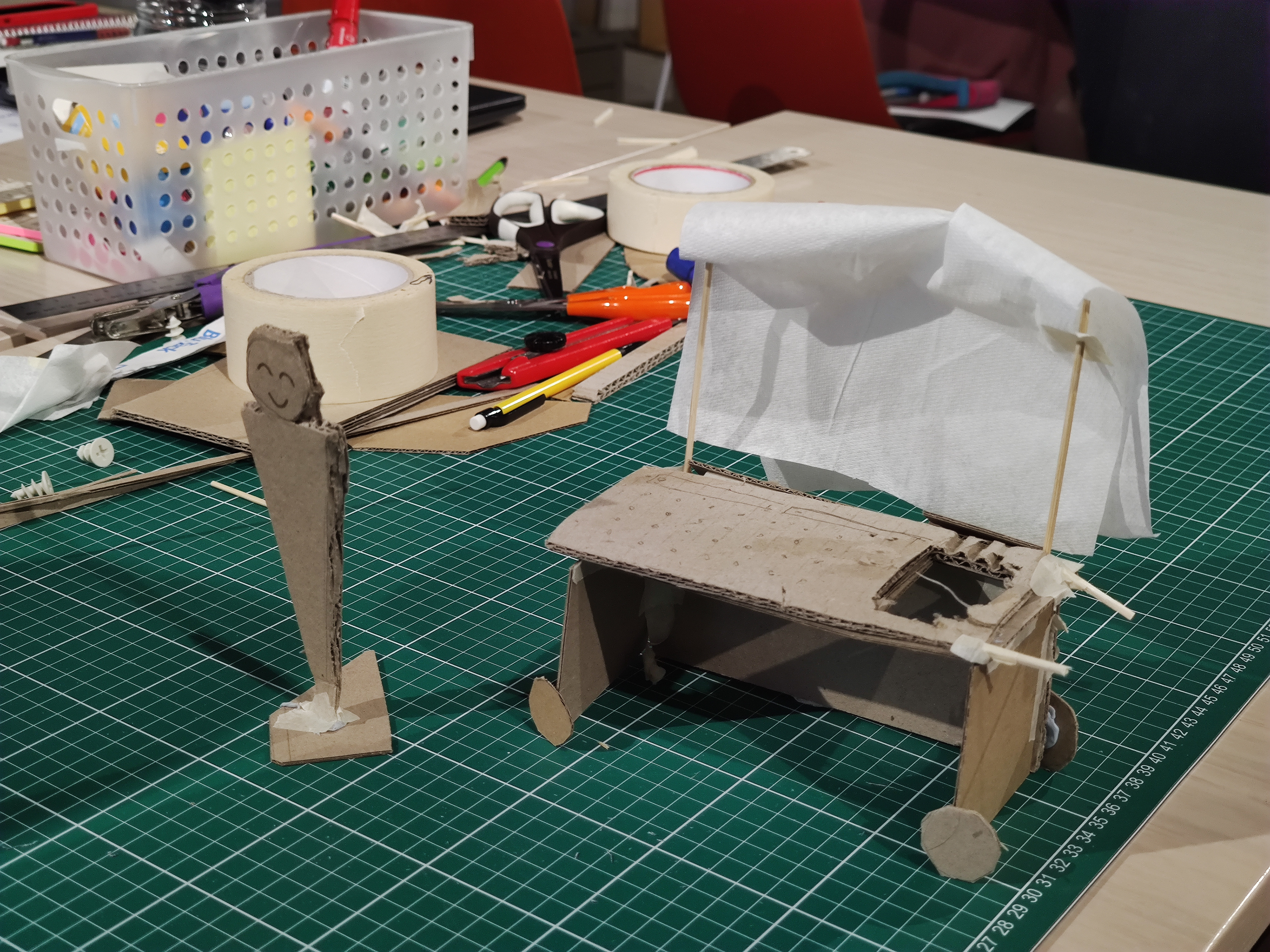
Quick Prototyping Techniques with cardboard, tape, toothpicks and paper materials. Human-scale applied.
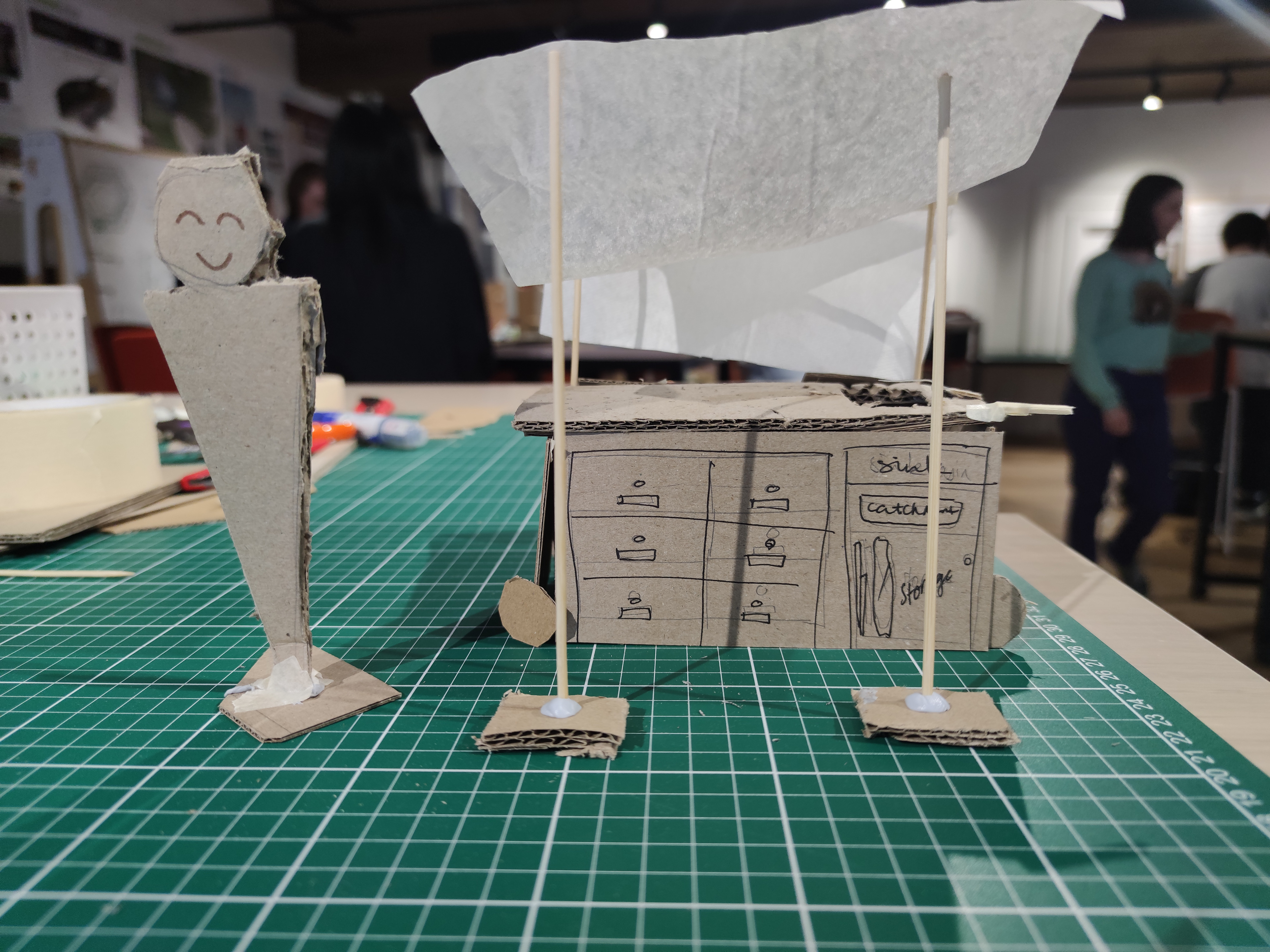
Quick Prototyping Techniques showing alternative drawer and shelving layout. Made with cardboard, tape, toothpicks and paper materials. Human-scale applied.

Quick Prototyping Techniques showing alternative drawer and shelving layout. Made with cardboard, tape, toothpicks and paper materials. Human-scale applied.
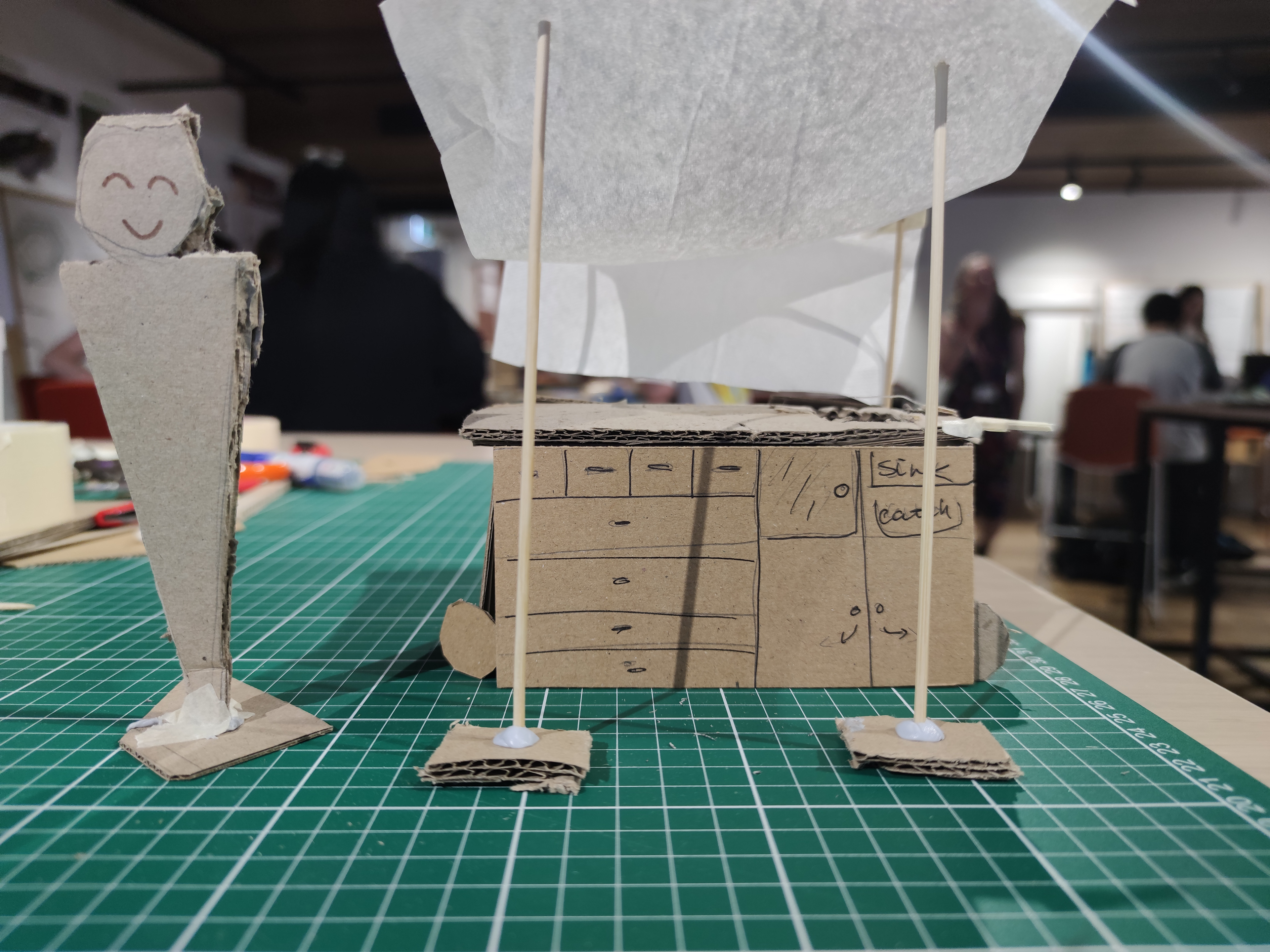
Quick Prototyping Techniques showing alternative drawer and shelving layout. Made with cardboard, tape, toothpicks and paper materials. Human-scale applied.
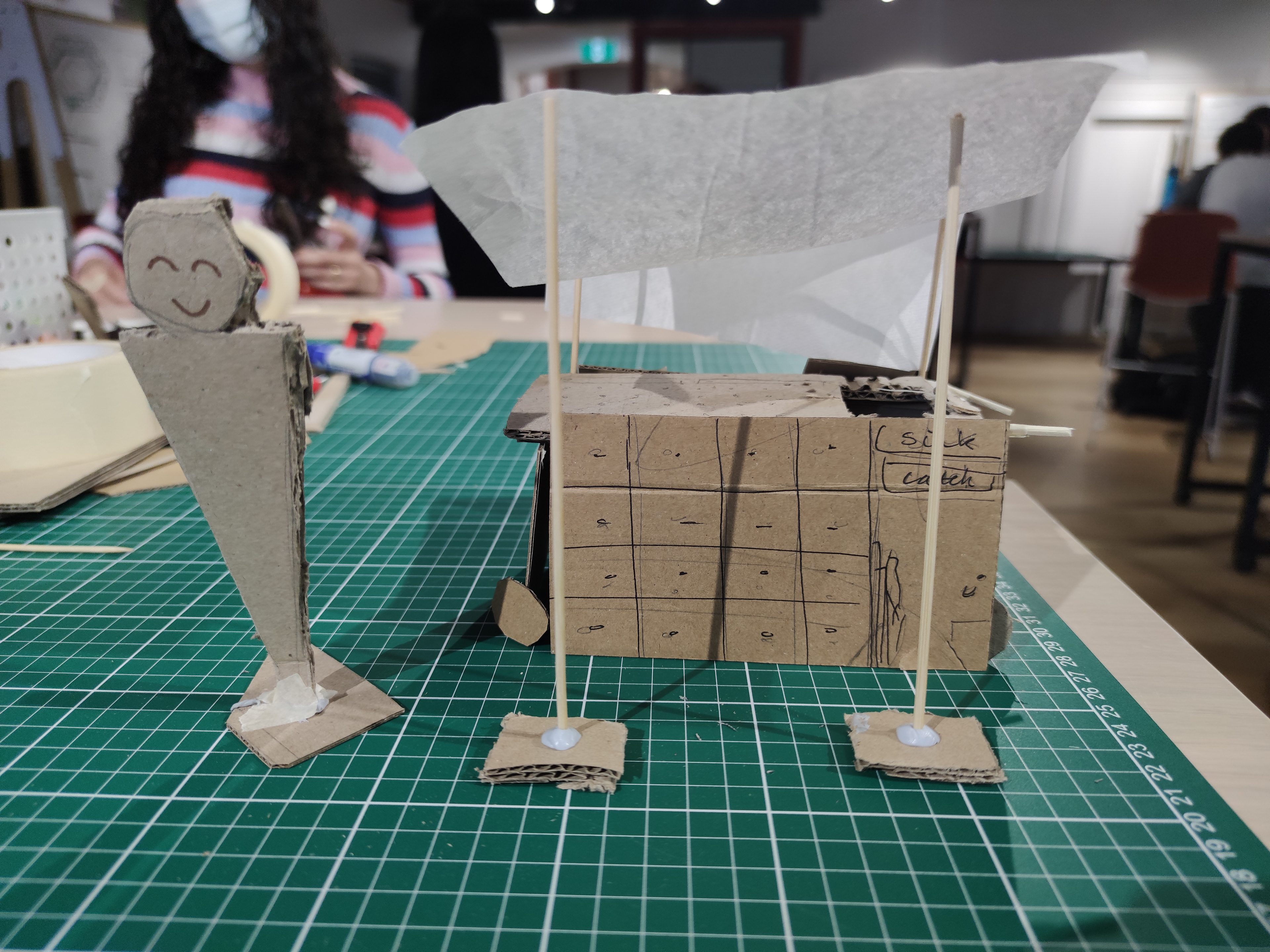
Quick Prototyping Techniques showing alternative drawer and shelving layout. Made with cardboard, tape, toothpicks and paper materials. Human-scale applied.
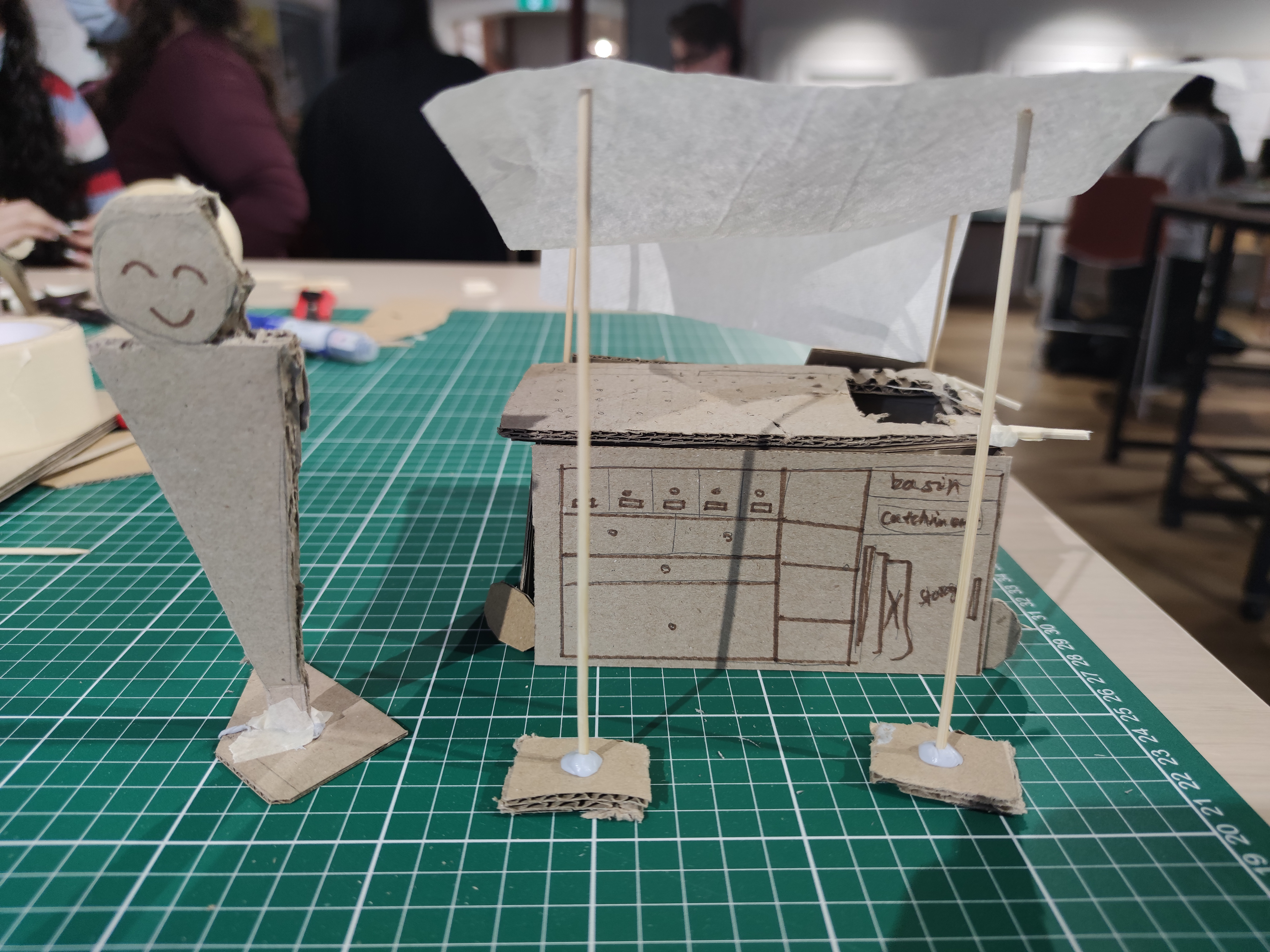
Quick Prototyping Techniques showing alternative drawer and shelving layout. Made with cardboard, tape, toothpicks and paper materials. Human-scale applied.
Further prototyping was also completed to look at supporting activities that could be included within the pod itself; these activities were specifically designed to prompt STEAM learning and address the need to build confidence in new high school students. This culminated in several activity ideas, with only one tangible prototype created for the idea of a deck of cards, each with a targeted prompt in STEAM, wellbeing and group activities. The deck of cards, first prototyped in cardboard, tape and markers, allowed an indication of the approach to what the final deck would act as within the pod.
This prototype was completed individually for the purpose of contributing further to the initial idea of the STEAM Learning Pod. There was some feedback from the team regarding the inclusion of topics outside of the STEAM curriculum, where wellbeing prompts would go on to encourage the user in area
First prototype of the STEAM Deck. Spagnuolo, 2022.